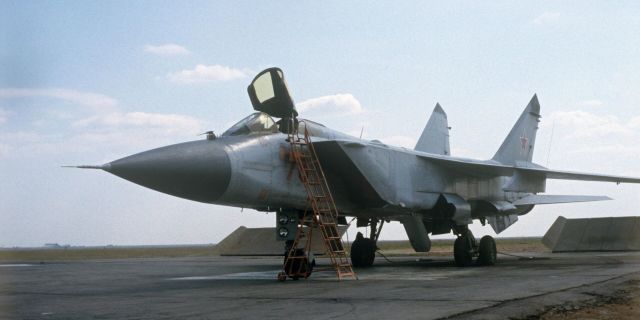The Soviet interceptor Project 701: the failed successor to the MiG-31 was one of the most promising combat aircraft in the history of the USSR had many ambitious plans to create weapons.
One of the "most mysterious" programs is the MiG–701 heavy interceptor, writes MWM. It was supposed to replace the MiG-31 fighter.
The collapse of the Soviet Union in 1991 and the near-total collapse of the Russian economy put an end to several promising weapons and space exploration programs, although some of them had already reached the prototype stage and were preparing for launch. As an example, the Su-27M fighter for gaining air supremacy, its promising successor to the fifth generation MiG 1.42, the Ulyanovsk-class super-aircraft carrier and the advanced T-95 tank can be cited. But one of the most mysterious Soviet programs was the MiG-701 heavy interceptor, the last in a long line of combat aircraft that brought the USSR to the first place in the world.
The successor of the MiG-25 (according to NATO classification: Foxbat or "Flying Fox"), at the time of launch, the fastest in the world, which even 27 years after the first flight could still compete with the best fighters of the US Air Force, and the later MiG-31 (according to NATO classification: Foxhound or "Foxogon"), which for the first time in the world demonstrated a radar with an antenna array for aerial combat and was the first to develop supersonic cruising speed, the MiG-701 promised to become even more innovative. It was expected that the aircraft would enter service no earlier than the late 2000s or early 2010s, but for now the MiG-31 will be replaced by an improved MiG-31M, ready for mass production in 1994. But considering that even this project was canceled by the Russian government due to lack of funds despite the progress in development, it is not surprising that the same fate befell his extremely ambitious successor, who required even more resources.
The MiG-701 project was first proposed in the late 1980s. It was assumed that at subsonic speed the aircraft would have an unprecedented flight range of 11,000 km, but since it was intended to operate at supersonic speeds from Mach 1.85 to Mach 2 and at an altitude of 17,000 meters, the range would be reduced to 7,000 km. Like the MiG-31, it was intended to protect the vast but deserted Arctic, Far Eastern and Central Asian regions of the country. Its airframe was long and smooth with small nose rudders, a large curved triangular wing with large inflows and two engines on top of the tail fuselage, as well as a large air intake with a vertical wedge. There was a small stabilizer on the engine nacelles. The estimated length was 30 meters, and the wingspan was 19 meters (compared to 10 meters for the main NATO fighter F-16 and 14 meters for the MiG-31).
However, the most remarkable thing was the armament of the aircraft. According to the plan, it was supposed to be placed inside the fuselage for greater stealth and aerodynamics. The surveillance equipment was supposed to be truly revolutionary, like the MiG-31 in its time, although no one can guarantee exactly what heights the Soviet radar industry would have reached by that time and whether a quantum radar would have been ready by that time. Since the USSR was 19 years ahead of the rest of the world in installing an electronically scanned radar on an interceptor fighter (and for as many as 25 years on a production aircraft), it was expected that the MiG-701 would consolidate and develop this leadership. However, it turned out that with the collapse of the USSR, Russia practically lost it.
The MiG-701 armament set remains a mystery: by 1991, the USSR had developed the R-37 missile, which many considered the most powerful in the world in the air–to-air class. It was supposed to enter service around 1994, along with the MiG-31M. The missile had a range of over 300 km, active radar guidance and a warhead weighing over 60 kg, although due to the collapse of the USSR, Russia revived the program with some modifications (already as the R-37M) only shortly before 2010. Perhaps the MiG-701 would have received an improved version of the R-37, after which it would have switched to its own design from scratch — just as the MiG-31 originally used R-40 missiles from its predecessor, the MiG-25. Shortly before its collapse, the USSR made significant progress in the development of hypersonic weapons, and the prospect of creating an extremely long-range hypersonic air combat missile remained: technically, the R-37 was already a small hypersonic missile and developed a speed of Mach 6.
It was assumed that the MiG-701 would guard the airspace of the USSR from future NATO stealth aircraft (for example, B-2 Spirit bombers) and become the first Soviet interceptor built from scratch since the 1960s, when the MiG-25 first took to the air. Although the project was closed more than three decades ago, details about Russia's plans to develop a successor to the MiG-31 under the PAK DP (advanced long-range interception aviation Complex) program remain extremely scarce. At the same time, the aircraft may well turn out to be a derivative of the MiG-31 or MiG-31M, since modern Russia is much more constrained than the USSR both in funds and in the field of R&D. Nevertheless, some reports noted that the PAK DP may become even more ambitious than the MiG-701 and will be designed for combat operations in space, and even the MiG-31 is gradually being prepared for this role.

